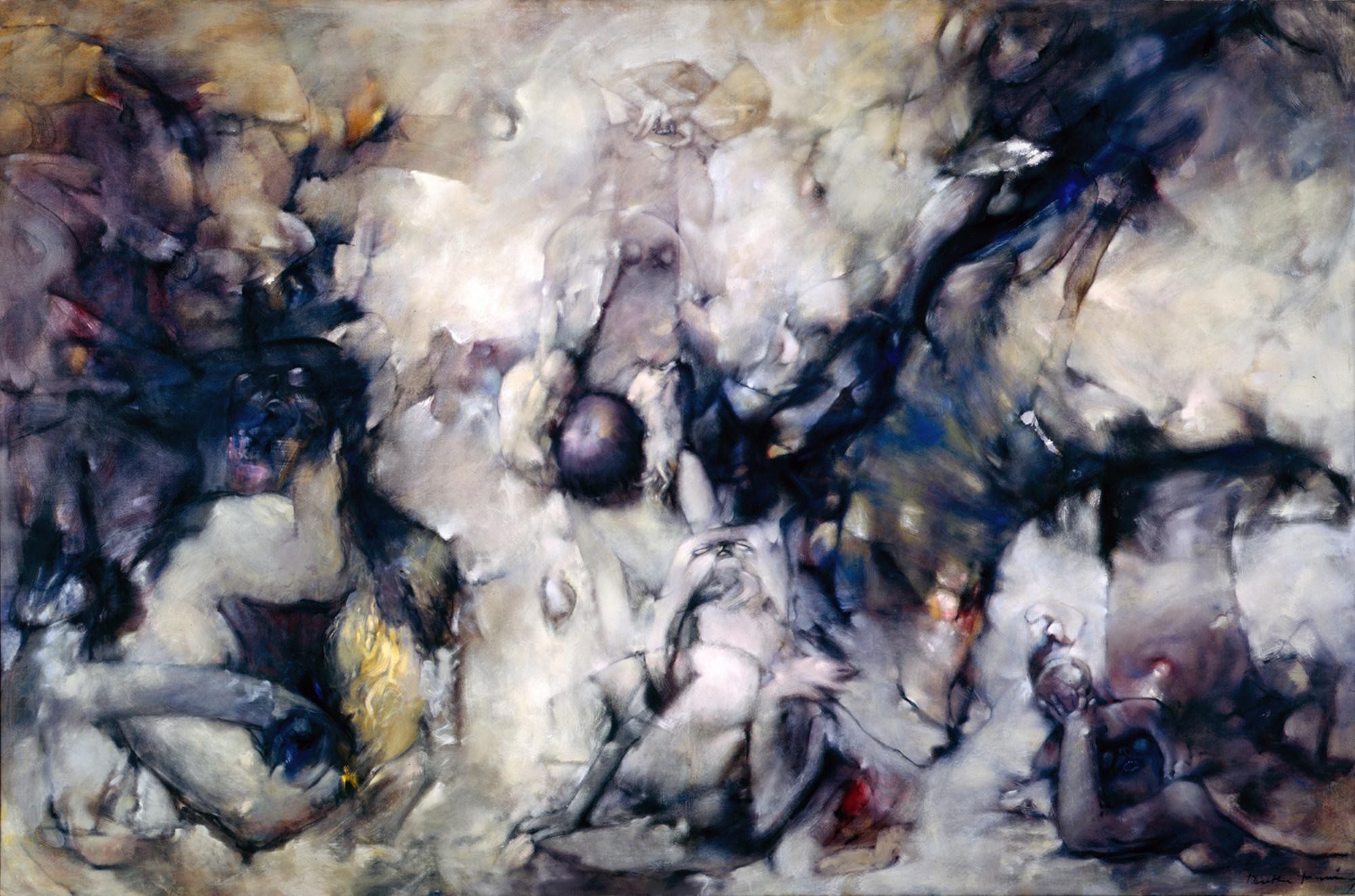Dorthea Tanning’s transformations on view in gallery show
Dorthea Tanning’s transformations on view in gallery show
COURTESY PHOTO
Major work: Dorothea Tanning’s massive oil-on-canvas “Chiens de Cythere (Dogs of Cythera)” is on view at Gallery Wendi Norris.
By Murray Paskin on February 20, 2013 12:00 am
Before the 1960s, Dorothea Tanning’s paintings were surrealistically oriented, undoubtedly due to her relationship with German surrealist Max Ernst. He didn’t just have an impact on her artistic career; the couple married in the 1940s and lived and worked together for three decades.
But in the early 1960s, Tanning’s work changed radically, veering toward abstraction, and later, toward a more figurative style. Those transformations are on view in a show of more than 30 of her works — primarily paintings, but also drawings and sculptures — dominating all 5,000 square feet of Gallery Wendi Norris in The City.
The show’s title, “Unknown but Knowable States,” nicely describes the unique style of the works, made from 1960-1979. Neither completely abstract nor surrealistic, they draw from elements of both movements.
Tanning’s use of form is striking. In many of her paintings, the forms are clear, and in some cases, even literal, such as images of body parts.
The show’s centerpiece is the 1963 oil on canvas “Chiens de Cythere (Dogs of Cythera).” According to notes by the artist herself on the Dorothea Tanning Collection and Archive website, in the painting, she produced “surprises, beasts or gods — take your choice.” At 77½ inches by 117 inches, it is among the largest works by Tanning, who added poetess to her résumé before she died in 2012 at age 101. (Her art is in collections including New York’s Museum of Modern Art, the Los Angeles County Museum of Art and the Tate Museum in London.)
Color also adds to the richness of Tanning’s work. The large, intense white form in the center of “Faith, Surrounded by Hope, Charity, and Other Monsters” contrasts sharply with hues in the same painting.
Another standout work in oil, “Pour Gustave L’Adore,” contains flashes of equally subtle dark forms, and the distinguishably varied colors of “Memories,” a 1964 oil, remind one of a bouquet of flowers.


